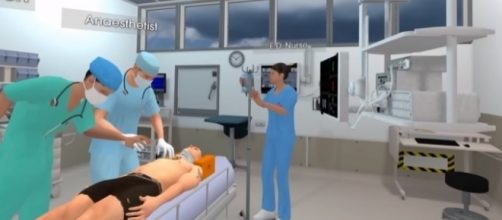virtual reality is a cutting-edge technology that is capable of allowing you to feel like you are being transported to a whole new dimension where you can do pretty much anything you want. It’s a device that has been very well received by the tech community.
However, VR devices such as Oculus Rift, PlayStation VR, and HTC Vive are not exactly selling like hot cakes on the market. In fact, it was predicted that the VR industry would be raking up sales of up to $5.1 billion in 2016, but in reality, the actual figure was only $1.8 billion. VR manufacturers are even giving away big discounts for their devices so that their products could reach the consumer market.
Thankfully, virtual reality is now being used for life-saving purposes, in the Healthcare Industry.
Virtual Reality can now save lives
Standford University School of Medicine is developing a program called Stanford Virtual Heart. In this program, medical trainees use VR headsets to examine and manipulate a human heart in virtual reality. Trainees are able to detect abnormalities of the heart as it hovers in mid-air.
The clinical assistant professor at the University David Axelrod, MD said, “Virtual Reality eliminates a lot of that complexity by letting people go inside the heart and see what’s happening themselves,” according to report by USA Today.
The technology is also being used to treat soldiers with post-traumatic stress disorder.
Moreover, VR technology can also hasten a stroke victim’s rehabilitation process.
What about Virtual Reality for the consumer market?
VR hardware for consumers is not exactly a “failure” at this point in time. It will be as successful as analysts have predicted, just not right away.
Perhaps the overall cost of the virtual reality headset may be a factor to its success, in addition to the available content for the product as well as usability.
For the meantime, the healthcare industry is maximizing the technology’s capabilities to improve its services and possibly save more lives.
At Children’s Hospital LA, expensive training mannequins are being traded for VR headsets. This could be worthwhile for the hospital for cutting maintenance and purchasing costs of the mannequins that can reach up to $430,000 a year.
VR is a phenomenal way of preparing people in the healthcare community for preparing them in real-life medical situations that have not been accomplished before by using realistic simulations.


